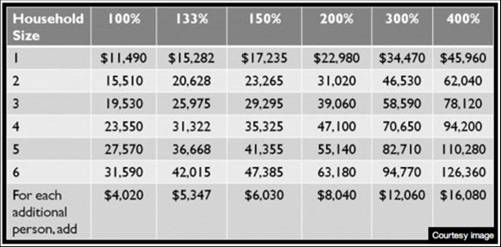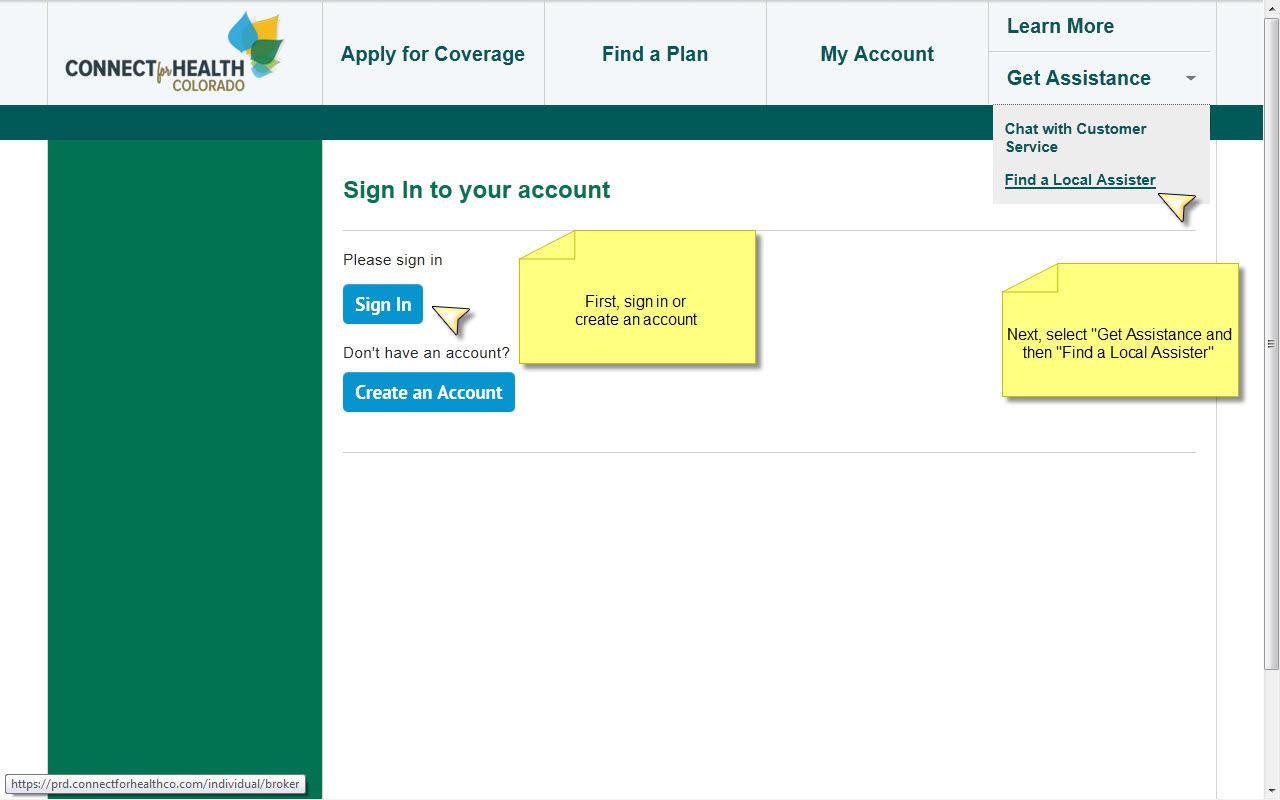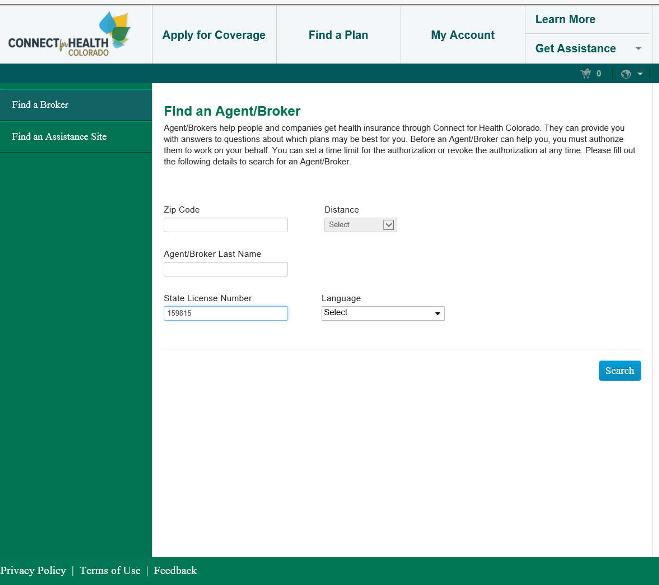Connect For Health Colorado Clients (On Exchange)
Groups of 2 or more W-2 Employees Please Click Here: Small Group Clients
Individual/Family Health Insurance: Do You Qualify For The Colorado Health Care Marketplace/Exchange? Scroll down to see the chart for qualification and subsidy.
Connect for Health Colorado 2016 rates will be available on November 1 2015. The rate increases will average around 8-12% increase.
Customers renewing their plans with Connect for Health Colorado will receive notices explaining renewal options between October 22nd and 31st. Changes in income may complicate things for those who received tax credits in 2015. Customers who receive a notice in November to re-apply for the federal tax credit, must re-submit their eligibility application and select their plan by December 15th to avoid a gap in coverage.
Open enrollment both ON and OFF EXCHANGE for Colorado residents needing individual/family health insurance plans re-opens on November 1st, 2015 and closes on January 31, 2016. Colorado residents needing help with renewals or shopping for new coverage may request help
November 1st Open Enrollment Season’s Guide to Shopping for New Coverage
The step by step guide below helps you quickly see what programs you may be eligible for that can reduce health insurance premiums and how to get ACA compliant health insurance through the exchange at the best rates available when the exchange re-opens on November 1, 2015.
Depending on household income, you very well may be eligible for federal subsidies that immediately reduce your health insurance premiums. Theses subsidies are Advance Premium Tax Credits. They are NOT available to people eligible for Medicaid or Medicare or who have affordable coverage available through an employer.
Advance Premium Tax Credits are based on (1) the size of your household and (2) your household’s estimated income for 2014.
Step 1. Determine Size of Your Household
| DO Include | DON’T Include |
|
|
Step 2. Estimate Your Household Income
You will have to provide an attestation of your expected household income in 2016, which is verified by the exchange with documentation from your most recent tax return, with consideration for reasonable changes. Married couples MUST file jointly in order to get thetax credit.
To estimate your 2016 household income, add the total income from the sources below for (1) you and your spouse and (2) any dependents who make enough money to be required to file a tax return:
DO Include: Wages, Salaries & Tips, Income from self-employment or business, Unemployment compensation, Alimony, Social Security payments, including disability payments, Income from investments, retirement, pensions & rental income, Other taxable income such as prizes, awards, and gambling winnings.
DON’T Include: Child support, Gifts, Supplemental Security Income (SSI), Veterans’ disability payments, Workers’ compensation.
Keep in mind that the Advance Premium Tax Credits are based upon your household’s Modified Adjusted Gross Income. The tax credits will be reconciled when you file your 2015 federal income taxes, so try to be as accurate as possible. Material mid-year changes in income should be reported by calling Connect for Health Colorado’s customer service department so they can make adjustments on the fly.
Step 3. Eligibility for Advance Premium Tax Credits or Medicaid
The chart below is for the 2013 Federal Poverty Levels. Go down to the correct row for Household size using the number of people in your household from Step 1 and then see where your estimated household income from Step 2 falls.

Tip: You can estimate your Advance Premium Tax Credit with the Subsidy Calculator tool.
Advance Premium Tax Credits are available to people with household Modified Adjusted Gross Income between 133% and 400% of federal poverty level. The tax credits operate on a sliding scale, so the higher the income, the lower the tax credit.
If you make below 133%, you should be eligible for Medicaid. If you make over 400%, you’re not eligible for an Advance Premium Tax Credit. Advance Premium Tax Credits are not available to people eligible for Medicaid or Medicare or who have affordable coverage through an employer.
However, you can use Connect for Heath Colorado to get private insurance with or without the Advance Premium Tax Credit as well as to enroll in Medicaid, as you’ll see in the following step.
Step 4. Applying for Cost Saving Programs, Determining Your Monthly Premium & Getting Covered
Connect for Health Colorado is Colorado’s health insurance exchange and it is the only place you can get a tax credit to reduce the cost of your health insurance. However, you can still get health insurance through the exchange, even if you don’t qualify for or want the Advance Premium Tax Credit.
First, go to Connect for Health Colorado and Create an Account or Login if you already have one. Next, authorize me as your Certified Agent on the exchange. This only takes seconds and is required before I can help you with your new insurance plan, answer questions and service your account going forward. There is no charge or extra cost for my services. I am paid a small commission by the insurance companies which helps us keep the lights on and provide resources like this to serve the community.
To summarize, go to Connect for Health Colorado. Create an account or login. Then, as shown in the picture below, from the “Get Assistance” tab, select “Find Expert Assistance in Your Community.”

Next, authorize me as your Certified Agent on the exchange. There is no charge or extra cost for my services and you MUST do this if you would like my personal help. It only takes seconds and your support helps me provide resources like this to serve the community.
Next, click on the “Continue” button for “Agent/Broker” and THEN Enter Stacey Gilbert’s Insurance License Number: 159815 – Thank you!!

Click on Stacey Gilbert’s name and then Select “Authorize.”
Make a note of Stacey’s phone number and email address after clicking on her name or print the page. After authorizing Stacey Gilbert as your Agent, you are then welcome to contact Stacey for personal assistance. There is no charge or extra cost for doing so. Please note that November 1-Dec 30 are peak times for open enrollment. Stacey will be checking email and phone calls regularly and will respond as soon as possible.
Final Step: Connect for Health Colorado’s 3 Primary Paths
Based on where your household income relative to the size of your household, 99% of people will go down one of three possible tracks.
Track 1) Obtaining Advance Premium Tax Credits: If your income is between 133% and 400% on the chart from Step 3 then to get the Advance Premium Tax Credit, you must first apply for Medicaid using the PEAK system and be denied. After you are denied, the PEAK system will provide you a denial code. The denial code is required to apply for the Advance Premium Tax Credit.
It typically takes anywhere from getting an instant response to 2 weeks to get a Medicaid denial code from the PEAK system. The more accurate and complete your Medicaid application is, the less time you’re likely to have to wait. You can call 800-359-1991 or 800-221-3943 between 8:00 a.m. and 6:00 p.m. Monday-Friday to check the status of your Medicaid application. You’ll need to provide your Application Tracking Number, which was provided on the final screen of the PEAK system’s online application.
After getting your Medicaid denial code (7-digit number that starts with 1B) from PEAK, then log back into Connect for Health Colorado, click the blue “Eligibility” button, enter the denial code and complete your application for the Advance Premium Tax Credit. This takes about 20 minutes and once that is done then you will be able to browse plans and see the final premiums, for all plans offered, less the Advance Premium Tax Credits you qualified for. Then simply add the chosen plan to your shopping cart and check out.
Money Saving Reminder – If your household income is between 133% and 250% of the Federal Poverty Level be sure to check the Silver plans, as they may have very attractive cost sharing reductions like lower deductibles and out of pocket maximums. You’ll only find these on the silver plans. Cha Ching!
Track 2) No Advance Premium Tax Credit: If your income is above 400% on the chart from Step 3, if you have affordable coverage available through your or a spouse’s employer, if you do not want to go onto Medicaid, if you are eligible for Medicare, or if you don’t want to take the tax credit in advance, then you can select the option at Connect for Health Colorado’s website to skip determining eligibility for premium assistance. Then it’s simply a manner of browsing the plans, adding the chosen plan to your shopping cart, filling out a brief application and checking out.
Slicing Through the Red Tape – Some people prefer to skip the exchange’s financial disclosure requirements to get an Advance Premium Tax Credit and instead wait and get the tax credit when filing their 2015 federal income taxes. The tax credit is then provided as an increased refund or reduction in taxes owed. This can be a safe choice for people whose income fluctuates during the year or just want to avoid red tape. However, you still must apply through the exchange to get the tax credit! Just skip the Medicaid application and Advance Premium Tax Credit applications.
Track 3) Getting Medicaid or CHP+ Coverage: Simply apply for Medicaid using the PEAK system. You can do this at Medicaid or go directly to www.colorado.gov/peak. You will be notified if you are eligible for Medicaid or CHP+. If you have been determined eligible for Medicaid your application data will be transferred to the State of Colorado and will then be handled according to state policies. FYI: I’m not able to help with Medicaid issues, so for ALL questions about Medicaid or CHP+ or to appeal their decisions call 800-359-1991 between 8am and 6pm Monday-Friday. You can see Colorado’s Medicaid plan benefits here and look up providers here.
Most Popular Question About Medicaid – What if I qualify and don’t want it? If you are eligible for Medicaid, you can still apply for private insurance plans through Connect for Health Colorado, but you will be ineligible for a tax credit and will pay the full cost of the monthly premiums.
Upcoming Deadlines and Penalties
For 2016, Not having health insurance can result in a tax penalty of $695 ($347.50 per child under 18) or 2.5% of your income – whichever is higher.
Open Enrollment and Special Enrollment Periods
After Open Enrollment closes people that buy their own health insurance will no longer be able to purchase Affordable Care Act compliant health insurance, either inside or outside of the health insurance exchange until Open Enrollment reopens next November 1, 2016. Exceptions apply if you have a qualifying event such as marriage, birth or adoption of a child, divorce, moving out of a service area, or involuntary loss of coverage. Please note that not paying a bill doesn’t count, so don’t let insurance coverage lapse.
You can also get instant online quotes, for select on and off-exchange 2016 plans, so you can easily see and compare rates on Colorado health insurance plans from many of Colorado’s leading health insurance companies.